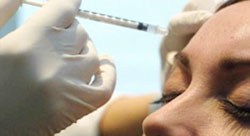The manifestation of moles on the skin is quite normal. The problem inherent even with benign moles is when they are too large and start to cause discomfort. For example, there are many people that have had mole removal procedures because their moles constantly itched and would become swollen. Other people have removed them to end public humiliation and social rejection. Malignant moles, aka: cancerous moles, are removed immediately when they start to appear on a person’s skin. There are several mole removal procedures that can be performed: your personal dermatologist or physician will determine the one that suits you best.

During the Procedure
The most common mole removal technique is called excision and it involves the doctor making an incision. Even though it’s an old technique, it remains efficient for mole removal. You must be prepared to potentially have a scar after the procedure. Scars are inevitable with invasive surgery but that doesn’t mean that they’ll be visible. The majority of mole removal scars are small and can easily go unnoticed. Whenever you’re ready for the procedure, be prepared for the physician to apply anesthesia on the area where the mole is going to be removed. If you are aware of any anesthesia allergies that you might have experienced before, make sure to let your physician know. After the area has gone numb, they will proceed to cut the mole and perhaps use a scalpel to shave off parts of it. At the end, the doctor will stitch up the wound and give you instructions on when to return.
After the Procedure
Even though the most important part is what happens during the mole removal procedure, proper aftercare will give way to healthy healing and minimal scarring. This means that if you take the appropriate precautions, you might end up with an almost invisible scar. While at home, make sure to always have your wound protected with gauze. Change the gauze frequently in order to protect your wound from getting infected. Try to clean it properly at least twice a day using clean water and make sure to apply a layer of antibiotic ointment after you do so. Stay away from vitamin E ointments because they tend to slow down the healing process. You can also check with your doctor to find out if there are any special instructions that you should be following.
When to Get Help
Mole removal procedures are very safe and most of the time they don’t require special attention. Still, there are a few things that you must keep in mind when you’re going through the healing process. If you experience any of the following symptoms, please seek medical attention immediately.
- Too much bleeding or discharge
- High fever
- Constant pain that doesn’t disappear after taking proper medication
- Fetid smell coming out of the wound
If you are unable to get in touch with your own dermatologist or private physician, be sure to visit the emergency room. These symptoms might be a sign of infection.
